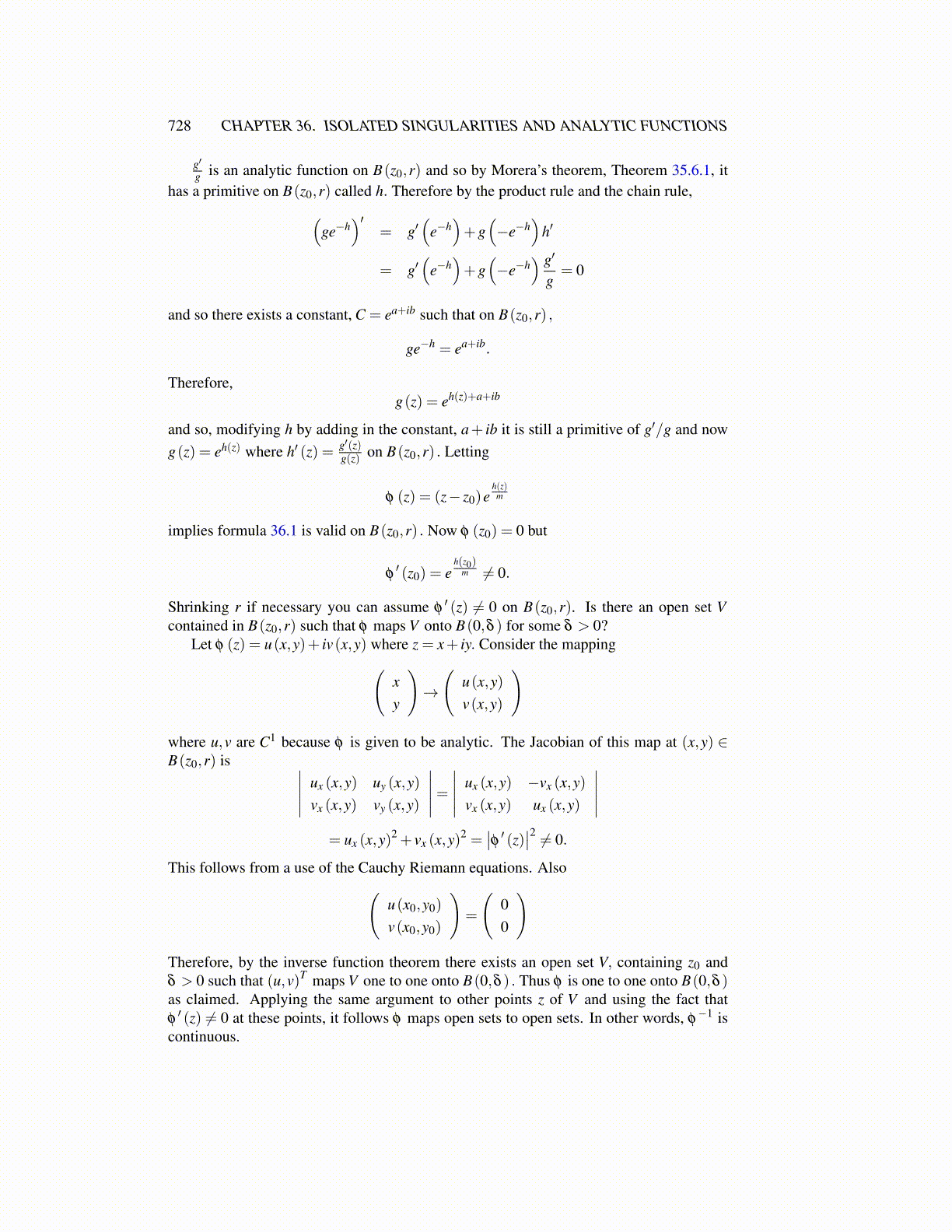
728 CHAPTER 36. ISOLATED SINGULARITIES AND ANALYTIC FUNCTIONS
g′g is an analytic function on B(z0,r) and so by Morera’s theorem, Theorem 35.6.1, it
has a primitive on B(z0,r) called h. Therefore by the product rule and the chain rule,(ge−h
)′= g′
(e−h)+g(−e−h
)h′
= g′(
e−h)+g(−e−h
) g′
g= 0
and so there exists a constant, C = ea+ib such that on B(z0,r) ,
ge−h = ea+ib.
Therefore,g(z) = eh(z)+a+ib
and so, modifying h by adding in the constant, a+ ib it is still a primitive of g′/g and nowg(z) = eh(z) where h′ (z) = g′(z)
g(z) on B(z0,r) . Letting
φ (z) = (z− z0)eh(z)m
implies formula 36.1 is valid on B(z0,r) . Now φ (z0) = 0 but
φ′ (z0) = e
h(z0)m ̸= 0.
Shrinking r if necessary you can assume φ′ (z) ̸= 0 on B(z0,r). Is there an open set V
contained in B(z0,r) such that φ maps V onto B(0,δ ) for some δ > 0?Let φ (z) = u(x,y)+ iv(x,y) where z = x+ iy. Consider the mapping(
xy
)→
(u(x,y)v(x,y)
)
where u,v are C1 because φ is given to be analytic. The Jacobian of this map at (x,y) ∈B(z0,r) is ∣∣∣∣∣ ux (x,y) uy (x,y)
vx (x,y) vy (x,y)
∣∣∣∣∣=∣∣∣∣∣ ux (x,y) −vx (x,y)
vx (x,y) ux (x,y)
∣∣∣∣∣= ux (x,y)
2 + vx (x,y)2 =
∣∣φ ′ (z)∣∣2 ̸= 0.
This follows from a use of the Cauchy Riemann equations. Also(u(x0,y0)
v(x0,y0)
)=
(00
)
Therefore, by the inverse function theorem there exists an open set V, containing z0 andδ > 0 such that (u,v)T maps V one to one onto B(0,δ ) . Thus φ is one to one onto B(0,δ )as claimed. Applying the same argument to other points z of V and using the fact thatφ′ (z) ̸= 0 at these points, it follows φ maps open sets to open sets. In other words, φ
−1 iscontinuous.